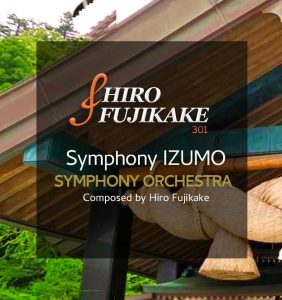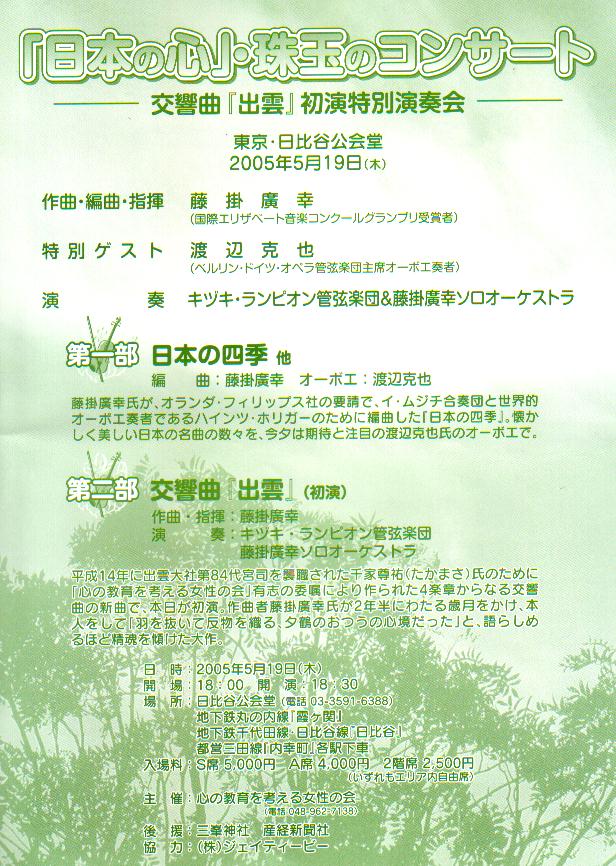The Rope Crest – Symphony Orchestra (311)
Grand Pix : Composition 1997 A at Queen Elisabeth International Music Competition of Belgium


https://concoursreineelisabeth.be/en/laureates/hiroyuki-fujikake/189/
Duration : Approx. :25min.
Work Description
With this work, Fujikake became the first Japanese music composer to win the Queen Elisabeth Competition. This music is for a large symphony orchestra with 8 horns. It was inspired by ancient Japanese pottery, which has impressed rope and flame patterns and is thought to be the world’s oldest earthenware. We can imagine a continuum from the time of this pottery to the prosperity of Japanese people who live in the present. This spectacular piece of music tells of the beginning of our culture and emanates the energy of life.
Hiro Fujikake was introduced in the Belgian Newspaper as follows;
Queen Fabiola remits prize to Hiroyuki Fujikake
On November 22, 1997 ended the Queen Elisabeth Contest, which was devoted to composition in 1977. Two works were selected: a string quartet and symphony work, both composed by Japanese composers. No prize was granted to composition of chamber music.
The Philharmonic Association of Brussels had taken the engagement to have the two selected works executed. Concerts took place on two consecutive Mondays in the Brussels Palace of Fine Arts.
Attendance at the awarded string quartet was not up to expectation, whereas the orchestra work had much more appeal.
The reason for the better reception of this work can, in our opinion, explained by the fact that the music of this Japanese composer sounds better in Western ears and, consequently, is not strange, which was the case with the other Japanese composer.
There are not many facts known about this composer, only that he is 29 years old, and that he studied at the Arts University in Aichi, Japan, until 1971.
Hiroyuki Fujikake calls his work “The Rope Crest”, a title which refers to primitive Japanese pottery, the border of which was protected by cord-work. “What’s in a name” could be said, since “Jomon-Fu” (the Japanese name for pottery) was only chosen as a title, because, he says, “he very much likes these old “Jomon pots” and because my composition reproduces the ghost of the prehistoric people who made this pottery”.
We did not find this evocation in “The Rope Crest”, though a few tones in the lyric introduction which made us think of Puccini; as regards the orchestration, sounds were like Schonberg’s ” Verklarte Nacht”; a colored mixing of influences from which Fujikake distilled music.
The structure of “Jomon-Fu” is transparent and consists of an introduction and three parts in one single movement. Four times a procedure is repeated, according to which a crescendo is followed by a slowing-down.
First performed by Belgian National Orchestra, conducted byGeorge Octors in Brussels in1977.
Handwriting score (128pages). Check a part of sheet music ▶︎
– First performed by Belgian National Orchestra, conducted byGeorge Octors in Brussels in1977.
– Performed by Nagoya Philharmonic Orchestra, conducted by Hiro Fujikake
– Performed by Tokyo City Philharmonic Orchestra, conducted by Shunsaku Tsutsumi
– Performed by Nagoya Philharmonic Orchestra, conducted by Yuzo Toyama
– Performed by Osaka Philharmonic Orchestra, conducted by Yukinori Tezuka



